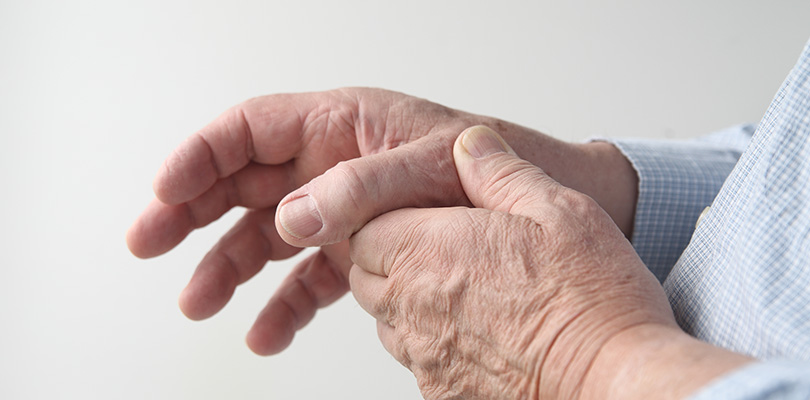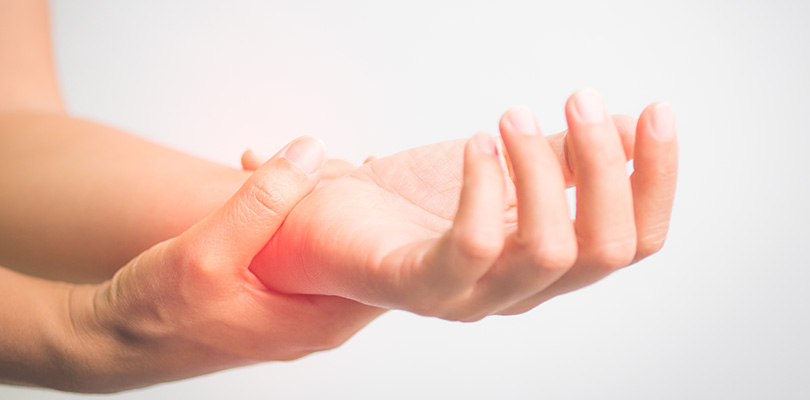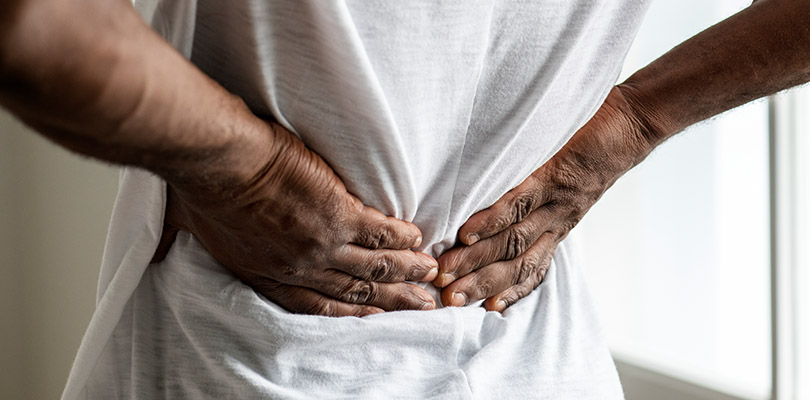Rheumatoid Arthritis in the Hands
There are 29 joints in each hand. When rheumatoid arthritis strikes in the hands, there are plenty of joints that can be affected.
What Is Rheumatoid Arthritis?
Rheumatoid arthritis is a long-term, progressive, and disabling autoimmune disease—which means your body attacks itself by mistake. The results of these attacks are inflammation, swelling, and pain around the joints.
When rheumatoid arthritis in the hands occurs, the joints affected include the large knuckles, middle knuckles, and joints in the wrist that connect the wrist bones to each other. The outermost joints of the fingers are affected by rheumatoid arthritis less frequently, but it can still happen.
Causes of Rheumatoid Arthritis in the Hands
Joints are susceptible to inflammation for people with rheumatoid arthritis. The nature of an autoimmune disease is to attack cells that the body thinks are dangerous.
White blood cells, called leukocytes, are sent out to the hand joints. These white blood cells trigger inflammation in the synovial joints, which are the joints that allow for movement.
Symptoms start when the immune system malfunctions and attacks the joints in the hands
Symptoms of Rheumatoid Arthritis in the Hands
- Tenderness. The buildup of synovial fluid and thickening joint tissue causes the affected areas to feel sensitive.
- Symmetrical inflammation. Rheumatoid arthritis usually affects both sides of the body equally. The pain and inflammation will mirror the left and right sides. If you have arthritis in the middle joints in one hand, you’re likely to experience the same in your other hand.
- Pain/Stiffness. You will feel an ache and decreased mobility in the wrists and knuckles. This symptom is worse in the mornings or after long periods of inactivity.
- Rheumatoid nodules. Hard, round bumps may gradually form under the skin in the affected joints of your fingers and wrists. These nodules are made of inflammatory tissue that builds up the longer you have rheumatoid arthritis. The bumps aren’t usually painful, but if you are concerned about them, you should see a doctor. Medications for rheumatoid arthritis may reduce the size of the nodules.
- Misalignment of joints. Over time, the destruction of joint tissue and bone erosion may cause deformations in the fingers and thumbs causing them to no longer align properly. With the advent of rheumatoid arthritis medications, there has been a reduction in the likelihood of permanent deformities.
- Skin flushing. Much like skin flushing you experience when you’ve been exercising or had one too many alcoholic beverages, the skin on your wrists and knuckles may feel warm and become red or purplish in color.
- Carpal tunnel syndrome. People with rheumatoid arthritis may have tingling and numbness in their hands and fingers. This may be the result of inflammation in the median nerve (also known as carpal tunnel).
- Fatigue and flu-like symptoms. Rheumatoid arthritis is an inflammatory disease that has the ability to cause symptoms all over the body. These symptoms may include fever, fatigue, and nausea.
Carpal tunnel symptoms typically include tingling or numbness, weakness, swollen fingers, electric shocks, fatigue, wrist and arm pain.
Treatment for Rheumatoid Arthritis in the Hands
There are a variety of treatment methods for rheumatoid arthritis, ranging from non-medicinal to medicinal to surgical options. The best way to treat rheumatoid arthritis is with good medical management.
Non-Medicinal Treatment Options for RA in the Hands
Occupational therapy helps strengthen joints in the wrists and fingers. This type of therapy improves hand dexterity and decreases the risk of future joint deformity or misalignment.
Occupational therapy helps educate on different ways to perform everyday tasks, which use a variety of tools and techniques, that will accommodate your rheumatoid arthritis and ease the impact on your joints. Occupational therapy may also include exercises that help improve hand function and relieve rheumatoid arthritis symptoms. Strengthening and stretching exercises for the hand and wrists can improve grip strength and joint mobility.
Splinting through the use of braces stabilizes hand joints to limit further deformity. There are several types of braces, some stabilize individual knuckles and others stabilize the wrist and hand. To ease stress on the joint, splinting is usually combined with injections.
Only wear a splint as directed by your doctor; too much of a good thing, in this case, may result in wasting the muscles that support the joint which leads to additional issues. Splinting is prescribed less now because surgery is becoming a more common treatment for rheumatoid arthritis.
Medications for RA in the Hands
Rheumatoid arthritis is usually treated with medication which includes non-steroidal anti-inflammatory drugs (NSAIDs) and disease-modifying anti-rheumatic drugs (DMARDs). These medications are prescribed to relieve pain and control arthritis as well as help control inflammation and prevent damage to the joints in the hands.
Corticosteroid injections are also a common treatment for rheumatoid arthritis and can be done to each joint three to four times a year. These medications are similar to a hormone made naturally by the body. The medication is injected into the affected joints to relieve inflammation. Often injected with long-lasting anesthetic for pain relief. Injections can be repeated as needed for relief of rheumatoid arthritis but should be limited to reduce the risk of side effects.
Surgical Options
Finger and wrist joint surgery are on the rise in recent years. This is a treatment option for those who have lost hand function due to deformity or those who are in severe pain.
Surgery is usually pursued after the patient has tried medication and other kinds of therapy. There are a few kinds of surgery available.
With joint replacement surgery, the surgeon removes the damaged bone surfaces and replaces them with prostheses made of metal and plastic. For joints with extreme inflammation, the surgeon will go in and remove the damaged tissue from the joint. Surgery may only be a temporary fix to the problem.
Talk to your doctor to see if surgery is right for you.
Next Steps
If you have rheumatoid arthritis in the hands, make sure you are doing what you can to ease your symptoms through the treatment options suggested above. Your hands are your tools; make sure you’re not putting unnecessary strain on them.







